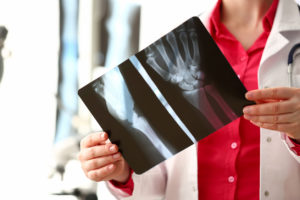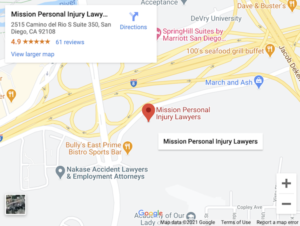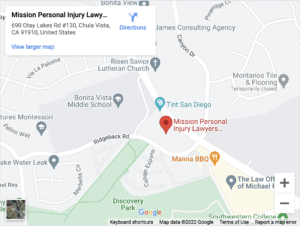
A lot of people experience bone fractures. Half of Americans will fracture at least one bone before turning 65 years old.
You might think that a common injury like a broken bone would give you little to worry about. But broken bones can have serious consequences ranging from disfigurement to long-term disabilities that can affect every aspect of your life.
Here are some facts about broken bones and the injury compensation you can seek if someone’s negligence caused them.
Table of Contents
What is the Structure and Function of Your Bones?
Your bones include all of your calcified tissues. Calcium phosphate makes your bones rigid and strong. This chemical compound also makes your bones brittle.
Your bones provide the scaffolding for your body. Your skeleton is the rigid framework for the soft tissue. The skeleton gives your body its shape and protects your vital organs from injuries, including your brain, heart, and lungs.
The bones also perform other functions. The bone marrow inside your bones creates new red and white blood cells that get added to your bloodstream as blood passes through your bones.
Since your bones help maintain your blood, you have tiny blood vessels running into and out of most of your bones. These blood vessels feed oxygen and nutrients to your bones and pick up new blood cells from your bone marrow.
How Do Broken Bones Happen?
Broken bones occur when a force overcomes the material strength of the bone. Various amounts of force can break a bone; it depends on its shape and location.
You could fracture your cheekbone when your face hits the airbag in a car accident. But the same impact may not fracture your jaw or skull because they are thicker and located away from the point of impact.
Different kinds of forces can fracture a bone, including:
- Impacts
- Bending forces
- Twisting forces
- Repetitive stresses
- Pulling forces
- Crushing forces
The force that breaks a bone will often affect the type of fracture you sustain.
What Are the Types of Broken Bones?
First, doctors must determine whether you have a displaced or non-displaced fracture. After a non-displaced fracture, the broken ends of the bone remain aligned after the fracture. Doctors only need to immobilize the bone in a non-displaced fracture so it can heal.
After a displaced fracture, the bone fragments sit out of alignment. Doctors first need to align the broken ends of the bone and then immobilize them. This will sometimes require surgery.
Bone fractures can take many different forms. The way you fracture your bones can affect the healing time and the risk of complications.
Transverse Fracture
A transverse fracture happens across the shorter dimension of the bone. These often happen from a bending force applied to the bone that causes it to snap. Thus, if you slip and fall and put your arm back to catch yourself, the force of your weight bending your arm against the ground can cause a transverse fracture.
Transverse fractures are one of the most common types of fractures. Doctors will align the broken ends of the bone and immobilize it with a cast or brace. The bone will heal in about eight weeks.
Compound Fracture
A compound fracture happens when the bone fragments of a displaced fracture move so far out of alignment that the broken bone pierces the skin, creating an open wound. Compound fractures often require surgery to realign the bone and clean the wound.
Avulsion Fracture
Tendons anchor muscles to bones. Ligaments hold bones together. An avulsion fracture happens when a tendon or ligament pulls on a bone and breaks off a piece. As a result, the tendon or ligament has a piece of fractured bone attached to the end and no longer anchors to the rest of the bone.
Doctors may operate to put the bone fragment back into place if it is displaced. Once the bone fragments are correctly positioned, the doctor will immobilize the entire joint so the bone can heal.
Comminuted Fracture
A comminuted fracture occurs when the bone breaks into at least three pieces. Comminuted fractures can happen from an impact or a crushing force.
After a comminuted fracture, a doctor must rebuild the shattered bone with plates and screws. Comminuted fractures can take up to a year to heal. If the doctors cannot rebuild the shattered bone because pieces are missing or too small, they may recommend amputation.
Spiral Fracture
A spiral fracture looks like a spiral around the circumference of the bone. These fractures happen due to twisting forces.
Stress Fracture
Stress fractures result from repetitive stresses. When bones get stressed, they develop tiny cracks. These cracks heal with rest. But when you cannot rest and repeatedly stress the bone, the cracks will propagate into a fracture.
Workers who perform repetitive motions as part of their jobs can develop stress fractures. Fortunately, these fractures heal with rest, and if they result from work, the worker can often claim workers’ compensation while taking time off to heal.
What Complications Can Occur from Broken Bones?
Broken bones can sometimes cause life-threatening complications. Some complications include:
Infection
When you suffer a compound fracture, bacteria could enter the open wound. This could cause an infection. You could develop osteomyelitis, a bone infection that occurs when bacteria get into the bone through the fracture.
Pulmonary Embolism
The body forms a clot over the fracture during the healing process. The clot protects the fracture from infection and holds the repair cells in place while rebuilding the bone.
But if a piece of the clot breaks off, it can make its way to the lungs. It can lodge in the blood vessels, preventing your blood from picking up oxygen. A pulmonary embolism can kill you without emergency treatment.
Arthritis
If the bone heals incorrectly, it can stress nearby joints. These joints can wear out and develop arthritis due to the awkward stresses they experience.
How Do You Get Compensation for Broken Bones?
If someone else’s negligence caused your broken bones, you could seek injury compensation by filing a personal injury claim or lawsuit. This compensation can cover your economic and non-economic losses. These losses include medical bills, lost income, and intangible losses due to long-term disabilities, pain, and mental anguish.
Broken bones can lead to long-term disabilities and short-term pain and anguish. To learn about the compensation to which you might be entitled, contact Mission Personal Injury Lawyers for a free case evaluation with an experienced San Diego injury lawyer at (619) 777-5555.


